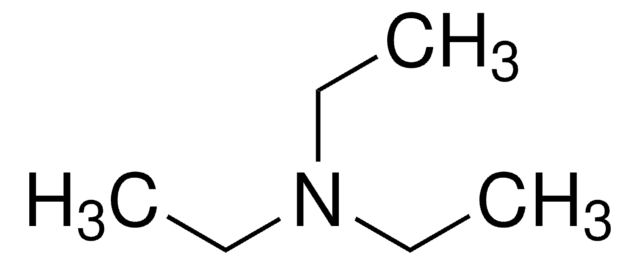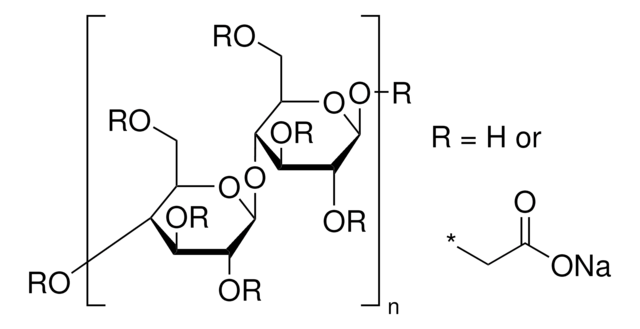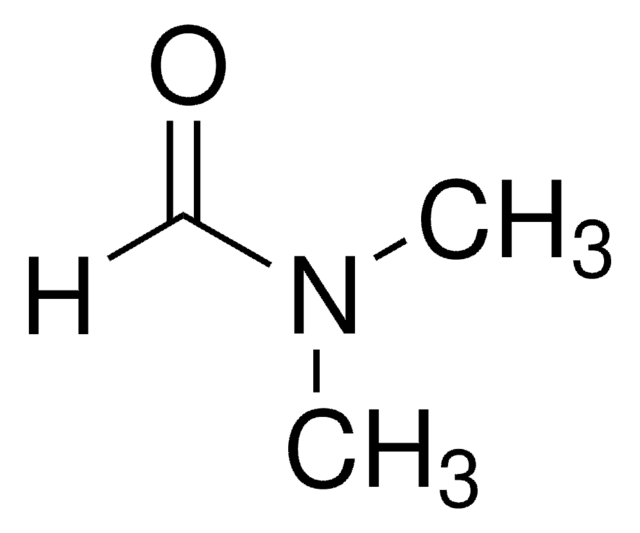439223
Dichlormethan
suitable for HPLC, ≥99.9%, contains 40-150 ppm amylene as stabilizer
Synonym(e):
Methylenchlorid
About This Item
Empfohlene Produkte
Dampfdichte
2.9 (vs air)
Qualitätsniveau
Dampfdruck
24.45 psi ( 55 °C)
6.83 psi ( 20 °C)
Assay
≥99.9%
Form
liquid
Selbstzündungstemp.
1223 °F
Enthält
40-150 ppm amylene as stabilizer
Expl.-Gr.
22 %
Methode(n)
HPLC: suitable
Verunreinigungen
Free halogens, passes test
≤0.0003 meq/g Titr. acid
≤0.02% water
Abdampfrückstand
<0.0003%
Farbe
APHA: ≤10
clear
Brechungsindex
n20/D 1.424 (lit.)
bp
39.8-40 °C (lit.)
mp (Schmelzpunkt)
−95 °C (lit.)
Dichte
1.325 g/mL at 25 °C (lit.)
λ
H2O reference
UV-Absorption
λ: 235 nm Amax: 1.00
λ: 240 nm Amax: 0.20
λ: 250 nm Amax: 0.05
λ: 260 nm Amax: 0.02
λ: 340-400 nm Amax: 0.01
Eignung
passes test for HPLC
SMILES String
ClCCl
InChI
1S/CH2Cl2/c2-1-3/h1H2
InChIKey
YMWUJEATGCHHMB-UHFFFAOYSA-N
Suchen Sie nach ähnlichen Produkten? Aufrufen Leitfaden zum Produktvergleich
Verwandte Kategorien
Allgemeine Beschreibung
Anwendung
- To compose ultrasonic baths for cleaning and protection of aluminum coating over atactic-PMMA (poly(methyl methacrylate)) for dielectric studies.
- Preparation of AMBF3 (ammoniomethyltrifluoroborate)-conjugated biomolecules.
- Sample preparation for GC-MS (Gas Chromatography-Mass Spectrometry) analysis.
- Preparation of ammonium acetate solvent mixture in combination with isopropanol, acetonitrile and water for mass spectral analysis of neutral lipids.
- Quantification of glutathione (GSH) and glutathione disulfide (GSSG) in biological samples by HPLC and spectrophotometry.
- As an extractant for 2,2-dithioethyl-4-(2′-pyridyl)-4-butyro-γ-lactone.
Angaben zur Herstellung
Signalwort
Warning
H-Sätze
Gefahreneinstufungen
Carc. 2 - Eye Irrit. 2 - Skin Irrit. 2 - STOT SE 3
Zielorgane
Central nervous system
WGK
WGK 2
Flammpunkt (°F)
does not flash
Flammpunkt (°C)
does not flash
Persönliche Schutzausrüstung
Eyeshields, Faceshields, Gloves
Choose from one of the most recent versions:
Analysenzertifikate (COA)
Sorry, we don't have COAs for this product available online at this time.
If you need assistance, please contact Kundensupport
Besitzen Sie dieses Produkt bereits?
In der Dokumentenbibliothek finden Sie die Dokumentation zu den Produkten, die Sie kürzlich erworben haben.
Unser Team von Wissenschaftlern verfügt über Erfahrung in allen Forschungsbereichen einschließlich Life Science, Materialwissenschaften, chemischer Synthese, Chromatographie, Analytik und vielen mehr..
Setzen Sie sich mit dem technischen Dienst in Verbindung.




